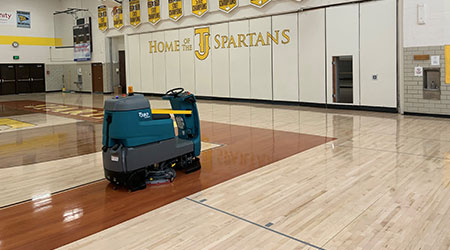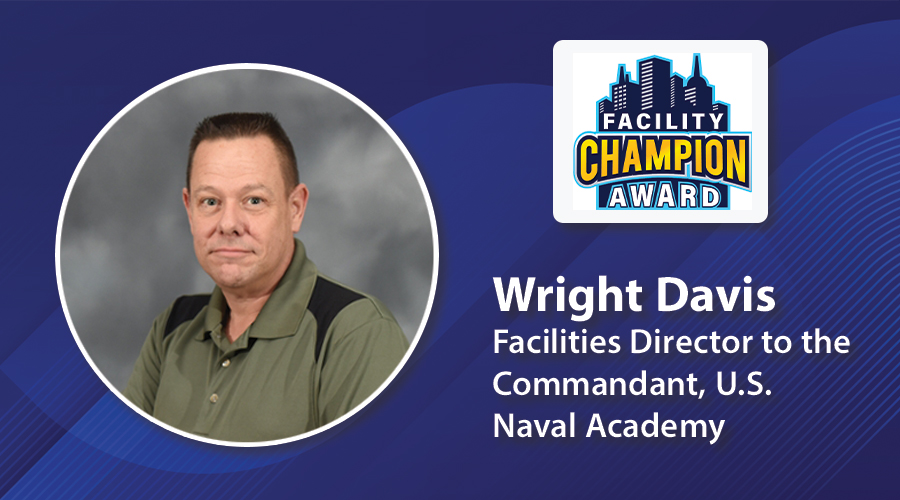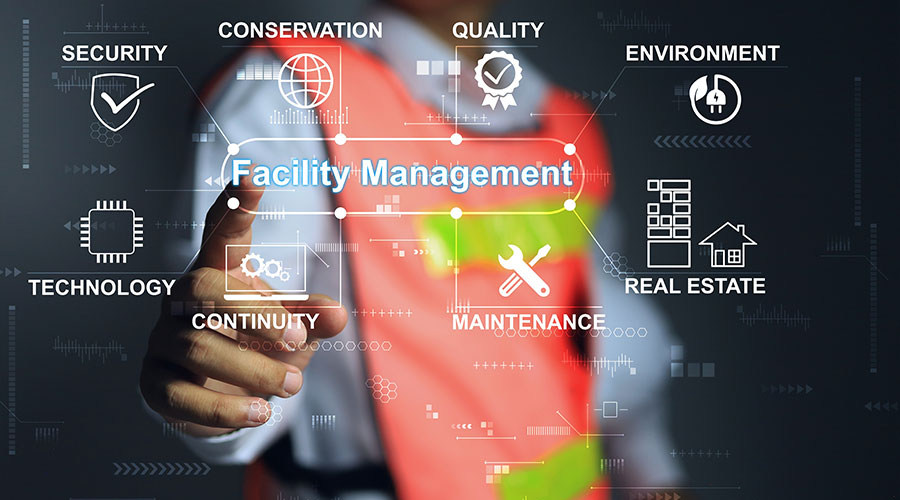 Denver Public Schools is running autonomous equipment daily in 15 of its largest school buildings, which includes Thomas Jefferson High School.Photo courtesy Denver Public Schools
Denver Public Schools is running autonomous equipment daily in 15 of its largest school buildings, which includes Thomas Jefferson High School.Photo courtesy Denver Public SchoolsRobotic Scrubbers Help District Reallocate Resources
Denver Public Schools invests $900,000 in autonomous equipment with an expected 2-year return on investment.
This school year looks different for districts across the country, and at Denver Public Schools (DPS) that includes a new fleet of robotic scrubbers roaming the halls.
After years of research and consideration, the district invested $900,000 in 15 autonomous machines and began deploying them over the summer. The self-driving floor cleaners promise to give facility management employees increased bandwidth to work on other higher-value tasks, such as cleaning between classes and other in-depth cleaning needs.
"The changes in technology have advanced to the point where this type of equipment would help us be more efficient,” says Trena Marsal, executive director of facility management.
Challenging situation
DPS is a large district of 90,000 students. Its facilities management department is tasked with cleaning more than 16 million square feet in 226 schools and 10 administrative facilities.
That’s a tall order under the best circumstances. It’s even more difficult with the budget and staffing shortfalls that plague many districts, including DPS.
“There’s competition for employees,” Marsal says. “We work with our HR and compensation departments to be competitive, but that's not always the case when you have budgets that are constantly declining.”
Staffing shortages are a hot topic lately, but Marsal says recent economic changes have only exacerbated a decades-long problem in the janitorial industry.
“The difficulty we have with hiring is not just because of COVID,” Marsal says. “I’ve been here for 22 years, and we’ve continued to have resource constraints.”
Reduced resources means reduced capacity. Marsal says meeting customer service needs is an ongoing struggle that grows more challenging each year.
“We like to be able to burnish and shine our floors daily, and we haven’t been able to do that in a while,” she says. “We went from daily cleaning years ago, to once a week, and then to once a month. Even that can be difficult, depending on how many vacancies we have.”
Not willing to concede defeat, Marsal makes innovation a priority — and part of the department’s strategic plan. She’s willing to consider any product or procedure that could increase efficiency and efficacy.
“We are always looking for ways to save on budget and time, and to deliver a quality product,” Marsal says.
When Richard Archuletta joined Marsal’s team as Director of Facility Operations two years ago, he shared his new boss’ interest in innovative solutions. After years of keeping tabs on autonomous technology, he quickly recognized its potential to help DPS.
When Archuletta brought up robotic scrubbers at a brainstorming session, Marsal asked him to evaluate a potential investment.
“Anytime you bring something new to me, I'm going to be interested,” Marsal says. “How does it impact the budget? Customer service? Our people? If we’re able to deliver more frequently on our cleaning, I’m definitely willing to move forward.”
Collaboration is important, Marsal says, because her directors and managers are the eyes and ears of her department. As an executive responsible for nearly 1,000 employees, Marsal says one of her top priorities is protecting corporate culture.
“I’m at a level where I may not be in communication every day, or even monthly, with the workforce,” Marsal says. “So it’s important to me that each of my managers understand why we are bringing in a product so they can pass along that message. You want to make sure there’s buy-in and communication, or you could have a mass exodus if your staff think you don’t appreciate them or worry you're looking to eliminate their jobs.
Analyzing the ROI
Archuletta researched robotic scrubbers from several vendors to determine the potential return on investment (ROI) based on several key considerations:
- Square footage cleaned per hour
- Amount of human interaction required
- Footprint and space limitations
- Ease of use and safety
- Training and service support
- Software, data features, and privacy
Archuletta and Marsal eventually chose Tennant Company’s T380AMR BrainOS-powered robotics scrubbers.
The autonomous scrubbers can clean up to 33,440 feet per hour, an increase over most of the district’s ride-on and walk-behind autoscrubbers. And they are leaps and bounds faster than hand mopping, which still happens in a few schools.
Robotic scrubbers have always been fast, but Archuletta didn’t believe the investment was worthwhile until more recent advancements in their operating software. These machines, he says, offer “set it and forget it” operation.
“The [artificial intelligence system] allows us to knock out an entire first-floor wing without very little engagement from the operator,” Archuletta says. “If a machine requires a babysitter while it works, if it can only do a section of a hallway and then needs to be reset and repositioned, I think you lose a lot of the ROI.”
Truly autonomous machinery means staff can do other work while the robots clean floors. The district is using robotic scrubbers to augment (not replace) existing machinery and people, which allows it to improve and expand services.
“These machines help us close a gap that’s been occurring for about the last decade,” Archuletta says. “When you don’t have enough staff to meet all the needs of the facility due to funding, one of the things that drops off is floor reconditioning because health and safety cleaning tasks come first.”
Cleaning and polishing floors was a two-step process. Without enough staff to tackle the time-consuming task, reconditioning dropped from twice a week to once a month or, in some cases, once a semester.
The floors in many buildings began to dull, exacerbated by ice melt tracked in after frequent snow events in Denver, and required stripping every summer.
The robotic scrubbers can clean and polish at once. The district is running the machines daily in 15 of its largest school buildings, and Archuletta hopes that will mean a return to stripping floors every other year or even every three years. If so, the district will realize cost reductions for supplies and labor.
Also important, Archuletta says, is that the machines will free up labor hours for a district facing a “significant vacancy rate.”
“In a lunchroom at the large high schools, for example, it requires two or three staff members to take out trash, sweep, and clean the floors. Now, after trash and sweeping, this machine can clean the floors. That’s an hour and a half of time being reallocated to something else in the school before we even get to evening cleaning.”
A robotic scrubber can run up to four hours on one charge, or the equivalent of a part-time employee. Archuletta is excited to reallocate some of those labor hours to periodic cleaning. Someone who once would have run an autoscrubber can instead focus on wall washing, dusting, window cleaning, or other detail cleaning.
DPS anticipates that the variety of savings will allow it to recoup the initial $900,000 investment in about two years.
Added benefits
“There are other benefits that aren’t time or money,” Marsal says. “There’s also the customer service aspect. If our customers are happy with our services, then that’s just one more benefit of this product.”
The district’s internal quality assurance program has shown a decrease in scores related to cleaning, especially in the largest schools where the robotic scrubbers are being deployed.
“We anticipate our scores will go up with these machines,” Archuletta says. “That’s why this machine isn’t being used just for snow events, but it’s meant to be a program used nightly to help improve the overall condition in those spaces.”
Archuletta was also impressed with the ease of use of the machines, which employ a proprietary “teach and repeat” methodology that makes it easy for non-technical employees to deploy and adjust cleaning routes on the fly.
Another consideration was how much training and support the district could expect from its vendor. Archuletta hosted a large training session over the summer ahead of deploying the machines.
“Any apprehension, if there was any, was resolved that day,” Archuletta says. “By the end of the day, it was a pinch-me scenario of not believing they had these new machines, and asking how soon could they get their hands on them.”
Another big selling point of the machines is the data they provide. The high-tech operating system provides regular reports on the amount of time in use, square footage covered, and heat maps that compare a planned route to the actual route after any disturbances.
Plus, the manufacturer will continue to upgrade the software to improve the functionality of the machine.
There is also no risk of student data falling into the wrong hands because the machines don’t connect directly to the district’s network, Archuletta says. Instead, they connect to a building manager’s smartphone to communicate when it needs water or chemicals, or if it is trapped or is being harassed by students.
Ongoing analysis
The robotic fleet has been operational for only a short time, but the facilities department is actively monitoring the data to evaluate the ROI and make improvements to the program.
“The equipment gives us data so we continue to evaluate to consider what it could look like long term,” Marsal says. “Could we expand to more schools? At what level and size does it make sense? I want to make sure this is not a one-time evaluation, but this is a long-term evaluation.”
The district is already considering purchasing robotic equipment for its grounds and paint departments. District officials envision a time in the future when every building in the district will have an autonomous scrubber. For now, though, they anticipate buying them for the next largest schools in 2022.
“Industry best practices are leaning toward robotics and smart technology,” Marsal says. “For any other organization thinking the same, consider your metrics first. Where are your gaps, the areas that need improvement? Use that data to drive your decision.”
Becky Mollenkamp is a freelance writer based in St. Louis.
Related Topics:












